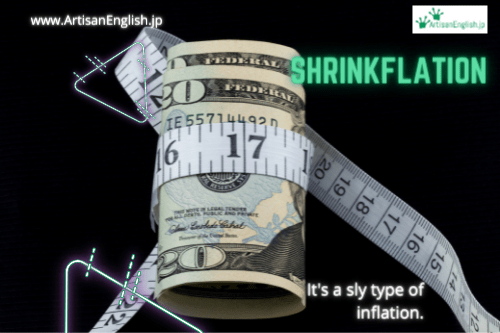
YouTube / iTunes / Spotify / Radio Public / Pocket Casts / Google Podcasts / Breaker / Overcast
Listen to ArtisanEnglish.jp posts & lesson intros here.
WotD: Shrinkflation
Shrinkflation is not a new phenomenon.
It has been around since the 1900s when high costs of ingredients forced companies to find creative ways to keep their profit margins up and consumers spending more money on the same product.
It’s a clever way to increase profits or maintain them while also maintaining a constant price.
Shrinkflation occurs when manufacturers raise prices but also reduce package sizes or just reduce package sizes due to increasing costs.
You may be hearing a lot of news from overseas about rising prices.
The pandemic lockdowns and fear of infection with COVID-19 increased online purchasing.
This, combined with the distribution crunch, has created a perfect storm.
In Japan, though, companies are highly reluctant to raise prices.
Many prices here have not increased for five or ten years, which has made the Japanese consumer very price-conscious.
Even if it is only 10 yen or less, any price increase will cause them to change their spending habits.
That’s why shrinkflation is very common here.
Another reason shrinkflation is sometimes preferred to price hikes is that consumers notice a price hike, whereas downsizing a product is not often picked up on by customers.
When a company changes its package design, that is a good reason for the consumer to be wary.
Shrinkflation can be easily disguised that way.
With rising prices overseas, and the reluctance of Japanese companies to follow suit, consumers here should be on the lookout for shrinkflation.
Flesch-Kincaid Readability Test
This post is understandable by someone with at least a 9th-grade education (age 15).
On the Flesch-Kincaid reading-ease test, this post scores 59.
The easier a passage is to read, the higher the score on a scale of 0 – 100.

